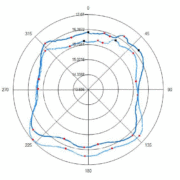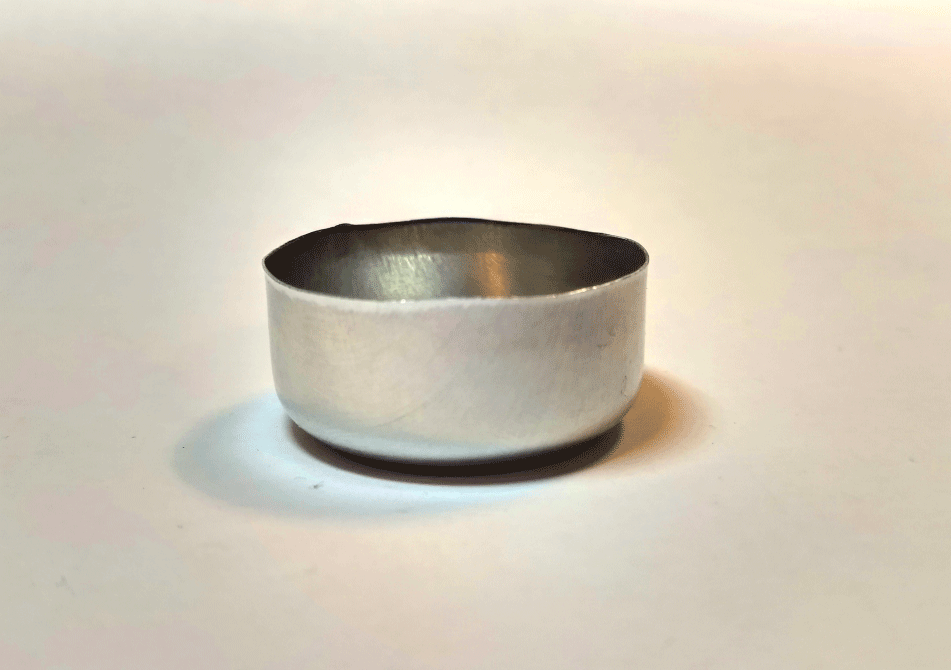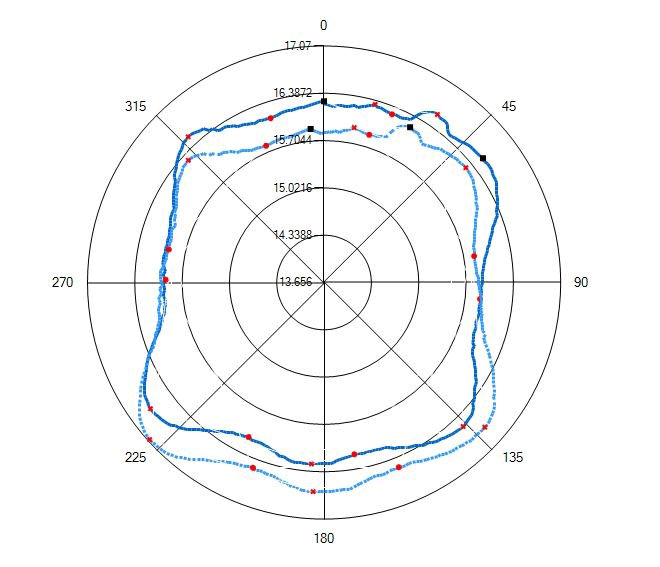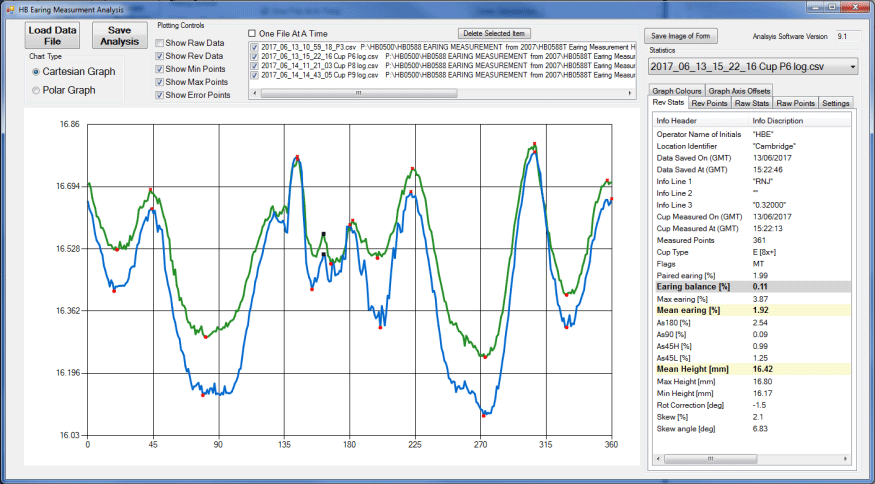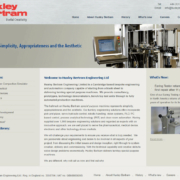An overview of Earing Measurement for Aluminium sheet metal and can manufacturers. As a leading provider of Earing Measurement Machines to sheet metal and can manufacturers around the world, Huxley Bertram is often asked, “What is Earing?”
“Earing” is a waviness in the top edge of a cup drawn from sheet metal. When a cup is drawn the top edge is noticed to naturally form an oscillating pattern. This results from anisotropy of the rolled sheet caused by the rolling process. Each peak is known as an “Ear” and “Earing” is the ring of ears around the top of the cup. Typically cups form with 4, 6 or 8 ears, in opposing pairs, at specific angles to the rolling direction of the sheet.
Why Measure Earing?
The type, size, position, and proportion of the ears can give significant insight into the quality, formability and crystalline structure of the metal. It is often used for batch release of sheet aluminium. To reduce waste in the can making process, as excess material has to be trimmed off, beverage can makers often specify a “Mean Earing” (% of variation in ear peak to trough vs can height) range from their sheet metal supplier.
Earing Measurement is also used in metal forming research and development.
How is Earing Measured?
All standard Huxley Bertram Earing Measurement machines use a low force high accuracy contact probe to measure the vertical displacement, while a high accuracy rotary encoder measures the rotation position. Contactless laser measurement of the profile is also an option. All our machines comply with EN1669 the European Earing Measurement standard.
How is Data Presented and Analysed
The data from our machines is output in a standard file format which provides easy file exchange and comparison between machines. Our Advanced Earing Analysis Software, which is provided with each machine or as a standalone package, reads the file, creates Cartesian and Polar plots of the data and carries out calculations to indicate the earing characteristics of the sheet metal.
The software uses sophisticated algorithms to compensate for the effects of skew often present in drawn cups due to uneven clamp forces or lubrication in the drawing process. This provides highly reliable and repeatable earing analysis results. After skew compensation a number of further calculations are provided:
- Mean Earing percentage and absolute value
- Mean Height
- Numbers of ears
- Max and Min Earing values
- Additional values to indicate the validity of the earing measurement
Multiple different earing profiles can be loaded in the software at once to compare profiles and calculation values. The charts can be manipulated and scaled to make comparison easy.
For more information on Huxley Bertram Earing Measurement machines, visit here






